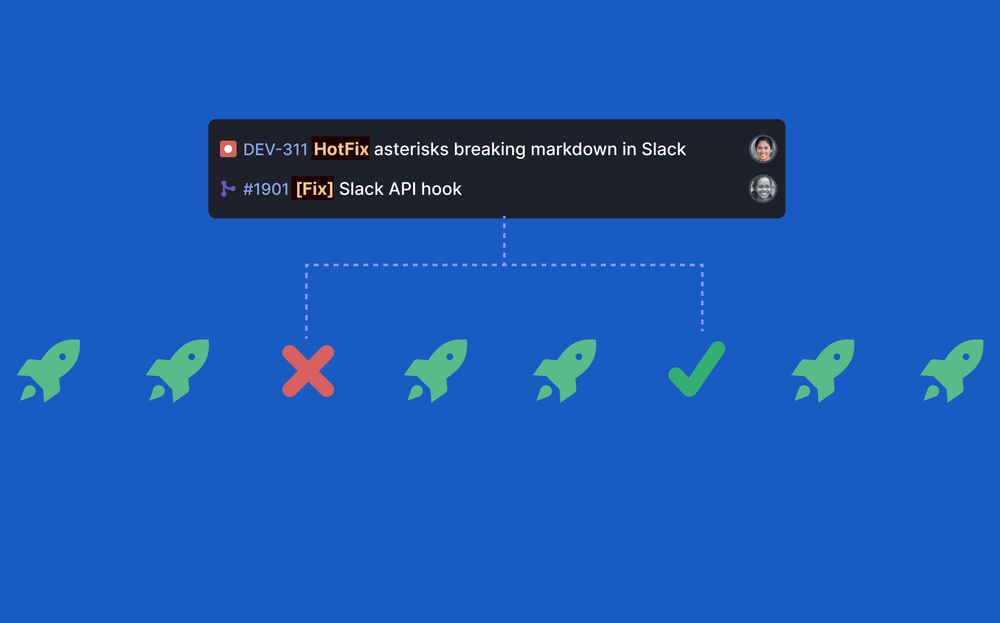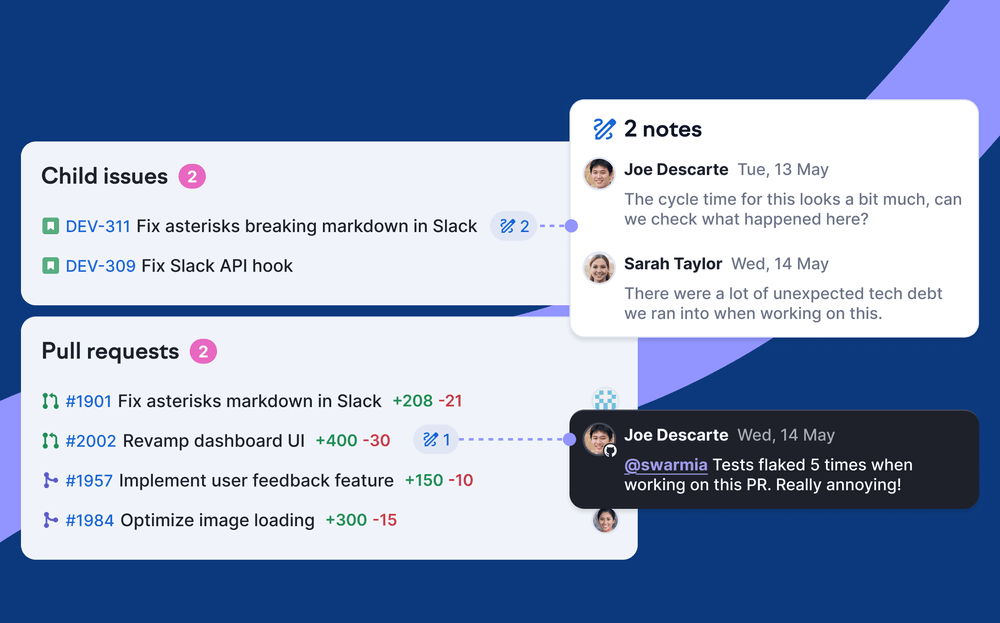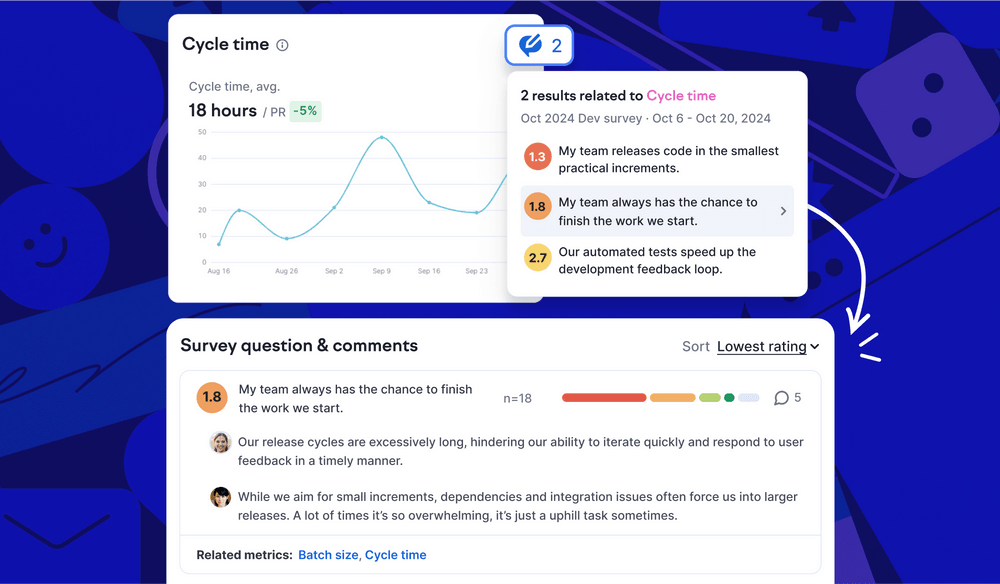
Dive deeper into metrics with related survey results
Developer experience surveys complement system metrics to give you a comprehensive view of what’s going on and how to improve. As we write on our blog, neither of these two types of data is inherently better, and you get the most out of each by combining them. Together they help you diagnose if your long epic cycle times are caused by interruptions, unclear priorities, or missing technical validation. Or you might learn whether technical debt or insufficient automated tests are causing your change failure rate to surge.
Now, you can see relevant survey questions right next to your pull request data, issue insights, and DORA metrics in Swarmia. Along with them, we show the latest survey results for the selected team to help you analyze everything in one place. To see the rating distribution and comments, simply click on the score to access the detailed survey report.
More updates
- You can now allow non-admins in your organization to create surveys. Contact us to enable this setting.
- Did you accidentally publish your survey results too soon? You can now unpublish them.
- Deployment apps using merged pull requests as their source now show more accurate data for GitHub merge queues.
- You can now choose to get notified when bots request reviews from your team.
Subscribe to our newsletter
Get the latest product updates and #goodreads delivered to your inbox once a month.
More changelog updates



